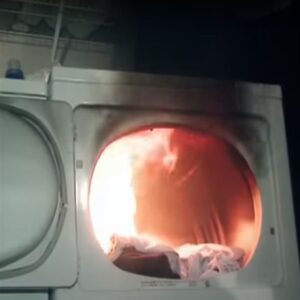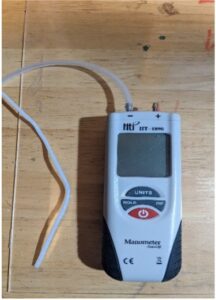Supreme Vent Cleaning is a dryer vent cleaning company that has cleaned thousands of dryers over the last 9 years. Whether it be residential or multi-unit, we are consider one of the best dryer vent cleaning companies in Phoenix.
But just because our customers think we are the best dryer vent cleaners in Phoenix doesn’t mean we take it for granted. We continue to improve. We are able serve our customers best by understanding, applying, and practicing the IRC code Chapter 15 (Exhaust Systems), listed on the International Residential Code.
As we see dryer vent lines in question in many older homes, it seems that few contractors are familiar with the codes. We hope that this article will help people understand the codes and distinguish the good from the poor. The dryer’s vent code must be understood. It allows dryers to work properly and safely. This prevents fires that can cause many deaths and millions of dollars each year.
There are Eleven requirements for people following the codes:
- Clothes dryers need their own dryer vent lines. It cannot be shared with other appliances, vent fans, chimneys, etc. It must have its own vent line.
- The dryer vent must exit to the exterior of the structure or house. It should not vent into the attic or garage. It should not be vented inside your home!
- At least three feet from doors and windows, the dryer vent exhaust point should be located. The HVAC system can also be included in the fresh air intake. The HVAC system can also be damaged by moist dryer exhaust. This can pose a threat to your health. Keep in mind that the exhaust from the gas dryer fuel vents out with dryer exhaust.
- The dryer vent line material must be smooth and made from water-resistant metal. The metal pipe runs from the wall hookup point to the outside exit point. The length of the pipe should be 4 inches and made from 28-gauge steel. For dryer vent lines, do not use flexible transition material.
- The dryer vent lines must be attached to the structure at twelve feet. These can be done with straps or fasteners that are designed to support them. If the vent is not supported, it can sag and water may build up in the middle. This could cause damage to the ceiling.
- The length of the transition duct (the flexible tube connecting the dryer to the dryer vent in the wall), must not exceed eight feet. The shorter, the better. It can’t be hidden behind a wall, floor or ceiling. It must be visible so it can easily be inspected and, if necessary, replaced.
- A dryer vent line’s maximum length, measured from the wall to exterior of the structure is thirty-five feet. Five feet are taken off for every ninety-degree elbow. If there are two ninety-degree elbows in dryer vent lines, it is considered ten feet.
- When a dryer vent line is installed in a new building, the person who installed it must leave a copy of the manufacturer’s instructions. These instructions will show the maximum length and diameter of the duct.
- If the dryer vent line length exceeds thirty-five feet in new construction, it must have a permanent label indicating this.
- After the dryer vent line is installed, and there has not been a dryer for some time, it needs to be closed and marked “future use.”
- Protective plating should be applied to the framing if the dryer vent line is near any other construction.
Clothes Dryer Safety
We offer tips to our customers when we do dryer vent cleaning in Phoenix and the surrounding metro area. The “National Fire Protection Association has a handy safety sheet that covers dryer safety.
- Install your dryer by a professional.
- Check that the dryer has a lint-filter.
- Fireproof metal transition ducts are recommended.
- After every load, clean the lint filter.
- You should ensure that the vent cover flaps are fully open.
- A professional should inspect your dryer vent line every year.
- Make sure the dryer is in top condition.
- Use the correct plug end for your power cord.
- Follow the manufacturer’s instructions.
- Do not leave the dryer on when you are leaving the house.
- You must ensure that the dryer is grounded properly.
- You need to leave enough airspace around your dryer for good airflow.
- Don’t dry clothes that have been in contact with gasoline, flammable substances, or any other liquids.
Failure to clean dryer vent lines is the main cause of dryer fires in home-clothed dryers. Some people don’t clean the lint trap after every load as well.
Supreme Vent Cleaning takes dryer vent cleaning in Phoenix, AZ very seriously. We train our technicians to inspect the dryer’s ability and exhaust the air that dried the clothes.
 A special instrument is used to measure the air flow. The higher the number, the better is the air flow. The dryer vent line will have more lint, or the vent cap may be blocked if the number is low. This will result in a lower air flow. The test tool will show us this and tells us there is a problem. We must then find the issue and fix it.
A special instrument is used to measure the air flow. The higher the number, the better is the air flow. The dryer vent line will have more lint, or the vent cap may be blocked if the number is low. This will result in a lower air flow. The test tool will show us this and tells us there is a problem. We must then find the issue and fix it.
We check the dryer’s back to see if it has become dirty. The transition tube is also checked to ensure that it is in good condition. Many times, the issue is the transition tube being pinched off as a result of the dryer being pushed back against the wall. Other times it is simply too long and needs to be shortened.
We also like to take-a-look in the lint trap area as well as the screen inside the dryer. If they have lint build-up, we need to clean those areas. We want to ensure that the dryer operates at its highest level and is safe when we leave. Our customers consider us the best dryer vent cleaning company in Phoenix because we do go the extra mile to make sure the dryer is safe and efficient.

